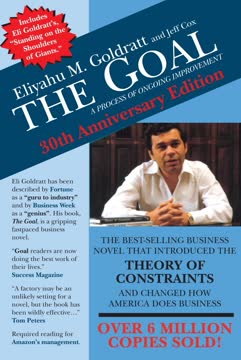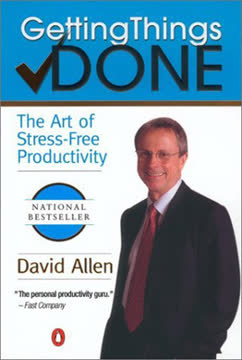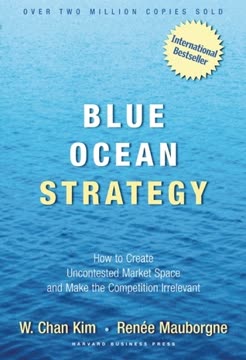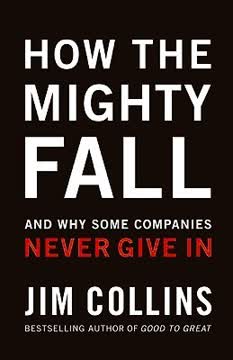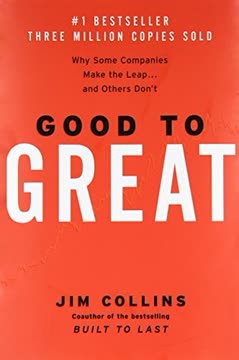मुख्य निष्कर्ष
1. जानिए आपका समय कहाँ जाता है: अपने समय के उपयोग को ट्रैक और विश्लेषण करें
समय सबसे दुर्लभ संसाधन है, और जब तक इसे प्रबंधित नहीं किया जाता, कुछ भी प्रबंधित नहीं किया जा सकता।
समय अमूल्य है। पैसा या लोग खरीदे या किराए पर लिए जा सकते हैं, लेकिन समय को न तो खरीदा जा सकता है, न ही उधार लिया जा सकता है। किसी भी कार्यकारी के लिए यह सबसे महत्वपूर्ण संसाधन है। इसे प्रभावी ढंग से प्रबंधित करने के लिए सबसे पहले यह समझना आवश्यक है कि आपका समय कहाँ जाता है।
अपने समय के उपयोग को ट्रैक करें। कम से कम तीन से चार सप्ताह तक अपनी गतिविधियों का रिकॉर्ड रखें। इससे आपके समय के उपयोग के पैटर्न सामने आएंगे और आप उन चीजों की पहचान कर पाएंगे जो आपका समय व्यर्थ कर रही हैं। आम समय बर्बाद करने वाले कारणों में शामिल हैं:
- अनावश्यक बैठकें
- खराब तरीके से व्यवस्थित कार्यप्रवाह
- अत्यधिक सामाजिक मेलजोल
- अप्रभावी संचार
विश्लेषण करें और सुधार करें। जब आपके पास अपने समय के उपयोग की स्पष्ट तस्वीर हो, तो गैर-उत्पादक गतिविधियों को कम या समाप्त करने के लिए कदम उठाएं। समय प्रबंधन की अपनी आदतों की निरंतर निगरानी और सुधार करते रहें ताकि आपकी कार्यक्षमता बनी रहे और बेहतर हो।
2. बाहरी योगदान पर ध्यान दें: संगठन के लिए अपनी अनूठी भूमिका परिभाषित करें
केवल योगदान पर ध्यान केंद्रित करने से प्रभावी मानवीय संबंधों की चार मूल आवश्यकताएँ पूरी होती हैं: संचार, टीमवर्क, आत्म-विकास और दूसरों का विकास।
अपना नजरिया बदलें। अपने व्यक्तिगत कार्यों और जिम्मेदारियों पर ध्यान देने के बजाय खुद से पूछें, "मैं ऐसा क्या योगदान दे सकता हूँ जो संस्था के प्रदर्शन और परिणामों को महत्वपूर्ण रूप से प्रभावित करे?"
अपना अनूठा योगदान पहचानें। विचार करें:
- आपकी विशिष्ट कौशल और विशेषज्ञता
- आपके संगठन की आवश्यकताएँ
- वर्तमान प्रक्रियाओं या प्रणालियों में कमी
- नवाचार या सुधार के अवसर
अपने प्रयासों को संगठन के लक्ष्यों के साथ संरेखित करें। सुनिश्चित करें कि आपका योगदान सीधे आपके कंपनी या संस्था के समग्र उद्देश्यों का समर्थन करता हो। यह संरेखण आपकी भूमिका और प्रभावशीलता को बढ़ाएगा।
3. ताकत को उत्पादक बनाएं: अपनी और दूसरों की ताकत का सदुपयोग करें
प्रभावी कार्यकारी ताकत को उत्पादक बनाता है। वह जानता है कि कमजोरी पर निर्माण नहीं किया जा सकता।
ताकत की पहचान करें। नियमित रूप से अपनी और अपनी टीम के सदस्यों की ताकत का मूल्यांकन करें। उन क्षेत्रों को खोजें जहाँ व्यक्ति उत्कृष्टता दिखाते हैं और लगातार परिणाम देते हैं।
ताकत का रणनीतिक उपयोग करें। लोगों की कमजोरियों को सुधारने की बजाय उनकी ताकत के आधार पर कार्य और जिम्मेदारियाँ सौंपें। इससे होता है:
- अधिक उत्पादकता
- नौकरी में संतुष्टि
- बेहतर समग्र प्रदर्शन
ताकत को और विकसित करें। प्रशिक्षण और अवसरों में निवेश करें जो लोगों को अपनी मौजूदा ताकतों को बढ़ाने में मदद करें। इससे निरंतर सुधार और उत्कृष्टता की संस्कृति बनती है।
4. कुछ मुख्य क्षेत्रों पर ध्यान केंद्रित करें: अधिकतम प्रभाव के लिए कार्यों को प्राथमिकता दें
यदि प्रभावशीलता का कोई "रहस्य" है, तो वह है एकाग्रता। प्रभावी कार्यकारी पहले महत्वपूर्ण कार्य करते हैं और एक समय में एक ही काम करते हैं।
मुख्य परिणाम क्षेत्रों की पहचान करें। उन सबसे महत्वपूर्ण कार्यों को निर्धारित करें जो आपके संगठन की सफलता पर सबसे अधिक प्रभाव डालेंगे। ये वे क्षेत्र होते हैं जहाँ आपकी अनूठी ताकतें और संगठन की आवश्यकताएँ मिलती हैं।
निर्दयता से प्राथमिकता दें। अपना समय और ऊर्जा इन उच्च प्रभाव वाले क्षेत्रों पर केंद्रित करें। कम महत्वपूर्ण कार्यों को "ना" कहने या दूसरों को सौंपने के लिए तैयार रहें।
एक समय में एक कार्य करें। मल्टीटास्किंग के प्रलोभन से बचें। इसके बजाय, एक महत्वपूर्ण कार्य पर पूरा ध्यान दें, जिससे गुणवत्ता बेहतर हो और कार्य शीघ्र पूरा हो।
5. प्रभावी निर्णय लें: निर्णय लेने की एक व्यवस्थित प्रक्रिया अपनाएं
प्रभावी कार्यकारी बहुत सारे निर्णय नहीं लेते। वे महत्वपूर्ण निर्णयों पर ध्यान केंद्रित करते हैं।
निर्णय लेने का ढांचा विकसित करें। निर्णय लेने के लिए एक संरचित प्रक्रिया अपनाएं:
- समस्या को स्पष्ट रूप से परिभाषित करें
- सफल परिणाम के लिए उद्देश्य और मानदंड निर्धारित करें
- विकल्पों का निर्माण करें
- विकल्पों का मानदंडों के अनुसार मूल्यांकन करें
- सर्वोत्तम विकल्प चुनें
- निर्णय लागू करें
- आवश्यकतानुसार निगरानी और समायोजन करें
महत्वपूर्ण निर्णयों पर ध्यान दें। तुच्छ मामलों में उलझने से बचें। अपने निर्णय लेने के प्रयासों को उन मुद्दों पर केंद्रित करें जिनका आपके संगठन के प्रदर्शन और परिणामों पर महत्वपूर्ण प्रभाव होता है।
समय पर निर्णय लें। गहन विश्लेषण आवश्यक है, लेकिन विश्लेषण में फंसना नहीं चाहिए। निर्णय लेने के लिए समय सीमा निर्धारित करें और उसका पालन करें।
6. प्रभावी निर्णय के तत्व: समस्या को परिभाषित करें और स्पष्ट उद्देश्य निर्धारित करें
यह स्पष्ट समझ कि समस्या सामान्य थी और केवल एक ऐसे निर्णय से हल हो सकती थी जो एक नियम या सिद्धांत स्थापित करता है।
समस्या की प्रकृति पहचानें। यह निर्धारित करें कि समस्या:
- एक सामान्य स्थिति है जिसे सिद्धांत आधारित समाधान चाहिए
- एक विशिष्ट घटना है जिसे विशेष समाधान चाहिए
- एक बार-बार आने वाली समस्या है जिसे प्रणालीगत सुधार चाहिए
स्पष्ट उद्देश्य निर्धारित करें। सफल परिणाम कैसा दिखेगा, इसे परिभाषित करें। विचार करें:
- मात्रात्मक लक्ष्य (जैसे, बिक्री में 20% वृद्धि)
- गुणात्मक सुधार (जैसे, ग्राहक संतुष्टि बढ़ाना)
- समयबद्ध लक्ष्य (जैसे, छह महीनों में नई प्रणाली लागू करना)
सीमाएँ निर्धारित करें। उन प्रतिबंधों और सीमाओं को जानें जिनके भीतर समाधान काम करना चाहिए। इससे विकल्प सीमित होंगे और व्यावहारिक कार्यान्वयन सुनिश्चित होगा।
7. विकल्प बनाएं और मूल्यांकन करें: निर्णय लेने से पहले कई विकल्पों पर विचार करें
कार्यकारी द्वारा लिए जाने वाले निर्णय केवल सर्वसम्मति से नहीं होते। वे तभी अच्छे होते हैं जब विभिन्न मतों के टकराव, संवाद और विभिन्न निर्णयों के बीच चयन पर आधारित होते हैं।
विविध दृष्टिकोण प्रोत्साहित करें। विभिन्न हितधारकों और विशेषज्ञों से सक्रिय रूप से सुझाव लें। इससे छिपे हुए पहलू सामने आते हैं और संभावित समाधानों की विविधता बढ़ती है।
संरचित मूल्यांकन विधियाँ अपनाएं। निम्नलिखित तकनीकों का उपयोग करें:
- SWOT विश्लेषण (ताकत, कमजोरियाँ, अवसर, खतरे)
- निर्णय मैट्रिक्स
- लागत-लाभ विश्लेषण
पूर्वधारणाओं को चुनौती दें। प्रचलित मान्यताओं और "सामान्य ज्ञान" पर सवाल उठाएं। इससे नवाचार संभव होता है और समूह सोच से बचा जा सकता है।
8. निर्णय और संचार की जिम्मेदारी लें: उचित क्रियान्वयन सुनिश्चित करें
निर्णय तब तक नहीं माना जाता जब तक लोग न जानें: उस व्यक्ति का नाम जो इसे लागू करेगा; समय सीमा; उन लोगों के नाम जो निर्णय से प्रभावित होंगे और इसलिए इसे जानना, समझना और स्वीकार करना आवश्यक है; और उन लोगों के नाम जिन्हें निर्णय की जानकारी दी जानी चाहिए, भले ही वे सीधे प्रभावित न हों।
स्पष्ट जवाबदेही सौंपें। प्रत्येक निर्णय के क्रियान्वयन के लिए जिम्मेदार व्यक्ति निर्धारित करें।
समय सीमा और मील के पत्थर तय करें। क्रियान्वयन और फॉलो-अप के लिए स्पष्ट समयरेखा बनाएं।
प्रभावी संचार करें। सभी संबंधित पक्षों को यह सुनिश्चित करें कि वे समझें:
- निर्णय और उसका कारण
- क्रियान्वयन में उनकी भूमिका
- अपेक्षित परिणाम
- संभावित चुनौतियाँ या जोखिम
फॉलो-अप करें और समायोजन करें। प्रगति की नियमित समीक्षा करें और वास्तविक प्रतिक्रिया और परिणामों के आधार पर आवश्यक समायोजन करें।
9. समस्याओं पर नहीं, अवसरों पर ध्यान दें: कठिनाइयों की बजाय संभावनाओं पर फोकस करें
प्रभावी कार्यकारी समस्याओं की बजाय अवसरों पर ध्यान देते हैं। समस्याओं का समाधान आवश्यक है, लेकिन वे केवल नुकसान को रोकती हैं। अवसरों का उपयोग परिणाम देता है।
अवसर खोजने की मानसिकता विकसित करें। खुद को और अपनी टीम को प्रशिक्षित करें कि वे हर स्थिति में, यहाँ तक कि असफलताओं या चुनौतियों में भी संभावित अवसर खोजें।
संसाधनों का रणनीतिक आवंटन करें। समस्याओं को ठीक करने की बजाय संभावनाओं का पीछा करने में अधिक समय, ऊर्जा और संसाधन लगाएं।
नवाचार की संस्कृति बनाएं। रचनात्मक सोच और जोखिम लेने को प्रोत्साहित करें और पुरस्कृत करें। इससे आपका संगठन आगे रहेगा और बदलती परिस्थितियों के अनुकूल होगा।
10. प्रभावी बैठकें: उत्पादकता के लिए बैठकें संरचित और संचालित करें
प्रभावी कार्यकारी जानते हैं कि विभिन्न उद्देश्यों के लिए विभिन्न प्रकार की बैठकें करनी होती हैं।
उद्देश्य स्पष्ट करें। प्रत्येक बैठक का उद्देश्य स्पष्ट रूप से बताएं:
- सूचना साझा करना
- निर्णय लेना
- समस्या समाधान
- विचार-मंथन
अच्छी तैयारी करें। संबंधित सामग्री पहले से वितरित करें और प्रतिभागियों से तैयारी के साथ आने की अपेक्षा करें।
समय का प्रभावी प्रबंधन करें। बैठकें समय पर शुरू और समाप्त करें। प्रत्येक विषय के लिए एजेंडा में समय सीमा निर्धारित करें।
फॉलो-अप सुनिश्चित करें। बैठक के अंत में स्पष्ट कार्यसूची, जिम्मेदार व्यक्ति और समय सीमा तय करें। बैठक के परिणामों का दस्तावेजीकरण करें और तुरंत वितरित करें।
11. अपने बॉस का प्रबंधन करें: अपने वरिष्ठ की ताकतों को उत्पादक बनाएं
प्रभावी कार्यकारी बॉस की ताकतों को उत्पादक बनाते हैं।
अपने बॉस के कार्यशैली को समझें। जानें उनके:
- पसंदीदा संचार के तरीके
- निर्णय लेने की प्रक्रिया
- मुख्य प्राथमिकताएँ और चिंताएँ
अपने प्रयासों को उनकी ताकतों के साथ संरेखित करें। जानकारी और विचार ऐसे प्रस्तुत करें जो आपके बॉस की ताकतों का लाभ उठाएं और उनकी कमजोरियों की भरपाई करें।
प्रभावी संचार करें। अपने बॉस को सूचित रखें:
- प्रमुख परियोजनाओं की प्रगति
- संभावित समस्याएँ या बाधाएँ
- सुधार या विकास के अवसर
प्रतिक्रिया और मार्गदर्शन मांगें। नियमित रूप से अपने प्रदर्शन और करियर विकास पर सुझाव लें। इससे पहल दिखती है और मजबूत कार्य संबंध बनते हैं।
12. प्रभावशीलता सीखी जा सकती है: "मैं क्या योगदान दे सकता हूँ?" पूछने की आदत विकसित करें
प्रभावशीलता एक आदत है; यानी, अभ्यासों का एक समूह। और अभ्यास हमेशा सीखे जा सकते हैं।
आत्म-जागरूकता बढ़ाएं। नियमित रूप से अपने कार्यों, निर्णयों और उनके परिणामों पर विचार करें। सुधार और विकास के क्षेत्र पहचानें।
प्रतिक्रिया मांगें। सहकर्मियों, अधीनस्थों और वरिष्ठों से सक्रिय रूप से अपने प्रदर्शन और प्रभावशीलता पर सुझाव लें।
जानबूझकर अभ्यास करें। समय प्रबंधन, निर्णय लेने, संचार जैसे विभिन्न क्षेत्रों में सुधार के लिए विशिष्ट लक्ष्य निर्धारित करें और लगातार काम करें।
अनुभव से सीखें। प्रत्येक महत्वपूर्ण परियोजना या निर्णय के बाद संक्षिप्त समीक्षा करें:
- क्या अच्छा हुआ?
- क्या बेहतर किया जा सकता था?
- भविष्य में किन बातों को लागू किया जा सकता है?
योगदान पर निरंतर ध्यान केंद्रित करके और इन सिद्धांतों का अभ्यास करके, आप प्रभावशीलता की आदत विकसित कर सकते हैं, जो आपके कार्यकारी पद पर सफलता और प्रभाव को बढ़ाएगी।
अंतिम अपडेट:
FAQ
What's "The Effective Executive" about?
- Focus on Effectiveness: "The Effective Executive" by Peter F. Drucker is about how executives can achieve effectiveness in their roles by focusing on results rather than efforts.
- Key Practices: The book outlines key practices that executives can adopt to improve their effectiveness, such as managing time, focusing on contributions, and making effective decisions.
- Self-Management: It emphasizes the importance of self-management and the ability to manage oneself to be effective in managing others.
- Organizational Impact: Drucker discusses how individual effectiveness contributes to the overall performance and success of an organization.
Why should I read "The Effective Executive"?
- Timeless Advice: The book offers timeless advice on how to be effective in any executive role, applicable across various industries and sectors.
- Practical Guidance: It provides practical guidance and actionable steps that can be implemented immediately to improve personal and organizational effectiveness.
- Focus on Results: Drucker emphasizes the importance of focusing on results, which is crucial for anyone looking to make a significant impact in their organization.
- Self-Improvement: Reading this book can help individuals develop self-discipline and improve their decision-making skills, leading to personal and professional growth.
What are the key takeaways of "The Effective Executive"?
- Manage Your Time: Effective executives know where their time goes and manage it to focus on high-impact activities.
- Focus on Contribution: They concentrate on what they can contribute to the organization rather than on their own tasks or authority.
- Build on Strengths: Effective executives make strengths productive, both their own and those of their team members.
- Make Effective Decisions: They follow a systematic process for decision-making, focusing on what is right rather than what is acceptable.
How can effectiveness be learned according to Peter F. Drucker?
- Systematic Practices: Effectiveness can be learned through systematic practices such as time management, setting priorities, and focusing on results.
- Self-Discipline: It requires self-discipline and the ability to manage oneself, which can be developed over time with practice.
- Focus on Strengths: Learning to focus on strengths and making them productive is a key aspect of becoming effective.
- Continuous Improvement: Effectiveness is a habit that can be cultivated through continuous learning and improvement.
What is the importance of time management in "The Effective Executive"?
- Scarce Resource: Time is the scarcest resource for executives, and managing it effectively is crucial for achieving results.
- Recording Time: Drucker advises recording time to understand where it goes and to identify time-wasting activities.
- Consolidating Time: Effective executives consolidate their discretionary time into large chunks to focus on important tasks.
- Prioritizing Tasks: They prioritize tasks to ensure that they are working on activities that contribute the most to organizational goals.
How does Peter F. Drucker suggest executives should make decisions?
- Systematic Process: Decisions should be made through a systematic process with clearly defined elements and steps.
- Focus on Principles: Effective decisions are based on principles and understanding the underlying realities of a situation.
- Encourage Disagreement: Drucker suggests encouraging disagreement to explore different perspectives and alternatives.
- Action-Oriented: Decisions should be converted into action with clear responsibilities and commitments.
What role does focusing on contribution play in executive effectiveness?
- Outward Focus: Focusing on contribution shifts the executive's attention from their own tasks to the performance of the whole organization.
- Responsibility: It emphasizes taking responsibility for results and holding oneself accountable for the performance of the organization.
- Value Creation: By focusing on contribution, executives align their efforts with the organization's goals and create value.
- Team Motivation: This focus also motivates team members by setting high standards and encouraging them to contribute to the organization's success.
How does "The Effective Executive" address the use of strengths?
- Building on Strengths: Drucker advises building on strengths rather than trying to fix weaknesses, both in oneself and in others.
- Staffing Decisions: Staffing decisions should be made based on what individuals can do well, maximizing their strengths.
- Organizational Design: Organizations should be designed to make individual strengths productive and to neutralize weaknesses.
- Personal Development: Executives should focus on their own strengths and work in ways that make them most effective.
What are the best quotes from "The Effective Executive" and what do they mean?
- "The effective executive focuses on contribution." This quote emphasizes the importance of looking beyond personal tasks to the overall impact on the organization.
- "Effectiveness can be learned." Drucker highlights that effectiveness is not an innate trait but a skill that can be developed through practice.
- "Time is the scarcest resource, and unless it is managed, nothing else can be managed." This underscores the critical role of time management in achieving effectiveness.
- "The best way to predict the future is to create it." This encourages proactive decision-making and taking initiative to shape outcomes.
How does Peter F. Drucker define an executive in "The Effective Executive"?
- Decision-Maker: An executive is defined as someone who makes decisions that have a significant impact on the organization.
- Responsibility for Results: Executives are responsible for the performance and results of their organization.
- Knowledge Worker: In modern organizations, executives are often knowledge workers who use their expertise to contribute to organizational goals.
- Leadership Role: Executives hold leadership roles and are expected to set an example for others in the organization.
What is the significance of setting priorities and posteriorities in "The Effective Executive"?
- Concentration: Setting priorities allows executives to concentrate on tasks that have the most significant impact on organizational goals.
- Courage: It requires courage to set posteriorities, deciding which tasks not to tackle, to focus on what truly matters.
- Avoiding Overload: By setting clear priorities, executives can avoid being overwhelmed by less important tasks and maintain focus on strategic objectives.
- Effective Resource Allocation: Prioritizing tasks ensures that resources, including time and talent, are allocated effectively to achieve desired outcomes.
How does "The Effective Executive" relate to modern management practices?
- Timeless Principles: The principles outlined in the book are timeless and continue to be relevant in modern management practices.
- Focus on Results: The emphasis on results and contribution aligns with contemporary performance management and goal-setting practices.
- Adaptability: The book's focus on adaptability and continuous improvement is crucial in today's rapidly changing business environment.
- Leadership Development: The concepts in the book are integral to leadership development programs, emphasizing self-management and effectiveness.
समीक्षाएं
द इफेक्टिव एग्जीक्यूटिव को एक क्लासिक प्रबंधन पुस्तक के रूप में अत्यंत सम्मानित माना जाता है, जो प्रकाशित हुए दशकों बाद भी प्रासंगिक बनी हुई है। पाठक ड्रमर के कालजयी विचारों की प्रशंसा करते हैं, जो समय प्रबंधन, निर्णय लेने और अपनी क्षमताओं का सदुपयोग करने जैसे विषयों पर गहन अंतर्दृष्टि प्रदान करते हैं। कई लोगों ने पाया कि इस पुस्तक के सिद्धांत केवल अधिकारियों तक सीमित नहीं हैं, बल्कि व्यापक रूप से लागू होते हैं। कुछ आलोचनाएँ भाषा और उदाहरणों के पुराने होने पर केंद्रित रहीं। कुल मिलाकर, समीक्षक इसे एक महत्वपूर्ण कृति मानते हैं जिसने आधुनिक प्रबंधन सोच को प्रभावित किया है, हालांकि कुछ ने इसे अत्यधिक शब्दवाली या पुरानी शैली की भी बताया। अधिकांश ने इसे व्यवसायिक नेताओं और ज्ञान कर्मियों के लिए अनिवार्य पठन के रूप में सुझाया है।
Similar Books
